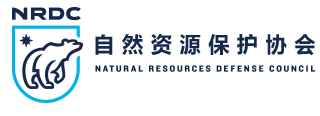This blog was co-authored with Yan Wang, Freda Fung and Lena Suponya.
Addressing mobile source pollution has the potential to radically improve the health and environment of people in China. Mobile source emissions, which come from vehicles, vessels and non-road equipment, have become the most significant source of pollution in many Chinese cities. In Shenzhen, mobile source emissions contribute to more than half of the city's PM2.5 pollution; in Beijing, these emissions account for 45%, and in Shanghai, Hangzhou, and Wuhan, over 25%. With nearly 60% of the Chinese population living in cities, the public health threats of mobile source pollution are sometimes far greater than that of stationary source pollution, which are typically found in less densely populated areas.
 Source: China vehicle environmental management annual report 2018
Source: China vehicle environmental management annual report 2018
Among all the mobile pollution sources, none are more polluting than diesel powered vehicles and equipment. In 2018, diesel trucks in China accounted for only 7.9% of total vehicles, but generated as much as 60% of NOx emissions and 84.6% of PM2.5 emissions from the entire vehicle fleet. In response to this issue, in 2019, China’s Ministry of Ecology and Environment issued its “Action Plan for Diesel Truck Pollution Control.” Additionally, addressing mobile source pollution is included as a major strategy in achieving the goals of the State Council’s Blue Sky Defense Plan (2018-2020). Some of the key measurers in the plan are summarized in the below graphic.

The impact of China’s policy towards combating mobile source pollution is highly dependent on its effective enforcement. Embarking on a new mobile source pollution control project, NRDC explores ways to ensure that existing laws are adequately enforced and new initiatives are created to strengthen existing emission control efforts. Stakeholders involved in mobile source air pollution reduction in China are varied, and there’s room to better align efforts, learn from best practices, demonstrate new business cases, and cooperate on strategies and solutions. To set off on an initiative that will affect multiple players, it is important to first create space for engagement and collaboration. NRDC plans to achieve this goal through pathways such as promoting collaborative governance amongst key stakeholders as well as expanding the legal capacity and participation of NGOs in China.
Recently NRDC gathered experts to provide a mobile source emissions collaborative training workshop. Experts from NRDC, China University of Political Science and Law, China Waterborne Transport Research Institute, and lawyers who are carrying out mobile source-related public interest lawsuits presented key legislation, relevant technology, litigation case studies and best practices for regulating mobile source pollution particularly in the trucking and shipping sectors. Around 80 participants, comprised of judges, prosecutors, lawyers, researchers, and NGOs, explored strategies for combating mobile source emissions and upholding the objectives of the “Blue Sky Defense Plan.”
Moving forward, the NRDC plans to engage with the private sector stakeholders as well. Including businesses in the discussion on how to transition to a greener transportation sector will be integral to creating economically and logistically feasible alternatives to highly polluting practices. In addition, it will be important to examine how businesses can create opportunities for individuals to express their preference for green practices through their purchasing decisions. NRDC plans to facilitate such discussions through a series of Collaborative Governance Roundtables.
The convening of key stakeholders for engagement and support is a strategy that has brought much success to many NRDC initiatives. For the sake of bluer skies, cleaner air, and less greenhouse gases, NRDC is committed to seeing similar success unfold in its initiatives to tackle mobile source pollution.


